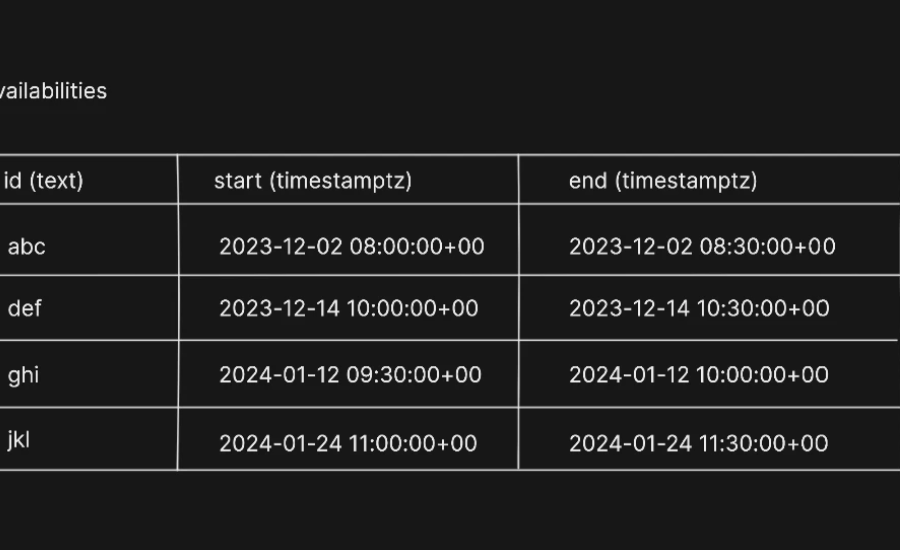Have you ever needed to round down date values to a specific level of precision? If so, you’re probably familiar with the date_trunc function in SQL, which is essential for truncating timestamps to a desired precision, such as the nearest day, hour, or minute. However, when implementing this function in Kysely, a modern TypeScript SQL query builder, the results might not always meet your expectations in terms of precision. In this article, we’ll explore the intricacies of using the date_trunc function in Kysely, discussing its usage, advantages, and potential precision issues you might encounter.
What Is Kysely?
Kysely Date_Trunc is Not Unique is a powerful query builder specifically designed for TypeScript, offering a type-safe interface for database interactions. It emphasizes simplicity, intuitiveness, and efficiency, making it a favorite among developers. By guaranteeing type-safe queries, Kysely minimizes errors and simplifies the process of writing and managing SQL queries. This blend of ease of use and dependability has established Kysely as a go-to tool for developers looking for a smooth and productive experience in database management.
Understanding Kysely
Brief History and Purpose
Kysely Date_Trunc is Not Unique was developed to provide developers with a seamless and type-safe experience when crafting SQL queries in TypeScript. The primary goal behind its creation was to streamline database interactions without sacrificing performance or flexibility. By emphasizing ease of use and robust functionality, Kysely has quickly become a favored choice among developers. Its design ensures that writing and managing SQL queries is both efficient and error-free, making it an invaluable tool for modern database management.
The Date_Trunc Function in SQL

Definition and Usage
The date_trunc function in SQL is designed to truncate a timestamp to a specified interval, effectively resetting the smaller time units to zero. For example, truncating a timestamp to the nearest hour will set the minutes and seconds to zero, preserving only the hour component. This function is invaluable for simplifying date-time data, making it easier to analyze, report, and aggregate information. By ensuring consistency in time data, date_trunc helps facilitate accurate comparisons and more coherent data insights.
Challenges with Date_Trunc in Kysely
While the date_trunc function is straightforward in concept, its implementation in Kysely can present some challenges. Here are common pitfalls and techniques to address them:
Common Pitfalls
- Incorrect Interval Specifications: One common issue is specifying an invalid interval, such as mistyping ‘day’ or ‘hour’. Ensure that the precision specified (e.g., ‘day’, ‘hour’) is valid and correctly formatted.
- Incompatible Data Types: Using date_trunc with incompatible data types can lead to errors. Make sure that the function is applied to timestamp or date data types.
- Error Messages and Troubleshooting: Errors like “invalid input syntax for type timestamp” can occur if the input data isn’t properly formatted. It’s crucial to verify that the data types and formats are correct to avoid such issues.
Importance of Unique Date Values
Unique date values are essential for accurate data analysis and reporting. Non-unique dates can result in incorrect aggregations and misleading insights. To ensure accuracy, it’s important to use techniques that guarantee the uniqueness of date values.
Techniques to Ensure Uniqueness

Use Distinct: Ensure that your queries return unique results by using the DISTINCT keyword. This helps eliminate duplicate records and maintain data integrity.
Combine with Other Functions: Enhance your results by combining date_trunc with other SQL functions to refine your data further. For example, you can use it with GROUP BY for aggregations or ORDER BY for sorting.
By being aware of these common pitfalls and employing techniques to ensure data uniqueness, you can effectively use the date_trunc function in Kysely for more accurate and meaningful data analysis.
Why Date Precision Might Not Be Exact
Despite its utility, the date_trunc function might not always yield precise results due to several factors:
Time Zone Differences
If the database and the application are in different time zones, the truncation might not align perfectly. This discrepancy occurs because date_trunc operates based on the time zone settings of the database, which may differ from those of the application or user.
Data Types
Different databases handle date and time data types differently. These variations can impact the precision of truncation. For example, some databases might store timestamps with different levels of precision, affecting how date_trunc processes and truncates these values.
Function Implementation
The underlying implementation of date_trunc can vary between different SQL databases. These subtle differences can lead to inconsistencies in truncation results. For instance, the way PostgreSQL handles date_trunc might differ slightly from how another SQL database implements it, leading to potential variations in output.
By understanding these factors, developers can better anticipate and mitigate issues related to date precision when using the date_trunc function in Kysely or any other SQL-based environment.
Ensuring Precision in Kysely
To mitigate issues and ensure precise date truncation in Kysely, consider the following strategies:
Consistent Time Zones
Ensure that both the database and the application operate within the same time zone or consistently use UTC. This alignment helps prevent discrepancies caused by time zone differences, ensuring that the date_trunc function produces accurate results.
Data Type Consistency
Use consistent data types for date and time across both the application and the database. This consistency minimizes the risk of truncation errors due to data type variations, ensuring that date_trunc operates uniformly on all date-time values.
Refer to Database Documentation
Consult your specific database’s documentation for detailed information on the date_trunc function. Understanding its behavior, limitations, and any database-specific nuances will help you effectively utilize the function and anticipate potential issues, leading to more reliable and precise date truncation.
By implementing these strategies, you can enhance the precision of date truncation in Kysely, ensuring accurate and consistent results across your applications.
FAQs
What is the date_trunc function used for in SQL?
The date_trunc function in SQL is used to truncate a timestamp to a specified interval, such as the nearest day, hour, or minute. It resets the smaller time units to zero, simplifying date-time data for analysis, reporting, and aggregations.
How does Kysely handle the date_trunc function?
Kysely Date_Trunc is Not Unique a TypeScript SQL query builder, allows developers to use the date_trunc function to truncate dates within their queries. However, implementing this function in Kysely might present challenges related to precision and compatibility.
What are some common pitfalls when using date_trunc in Kysely Date_Trunc is Not Unique?
Common pitfalls include incorrect interval specifications, incompatible data types, and error messages due to improperly formatted input data. Ensuring valid precision, compatible data types, and proper data formatting is essential.
Why might the date_trunc function not yield precise results?
Precision issues can arise due to time zone differences, data type inconsistencies, and variations in how different SQL databases implement the date_trunc function. These factors can lead to discrepancies in truncation results.
What techniques can be used to ensure unique date values in SQL queries?
To ensure unique date values, developers can use the DISTINCT keyword in their queries and combine date_trunc with other SQL functions, such as GROUP BY for aggregations or ORDER BY for sorting.
Conclusion
The date_trunc function is a powerful tool for managing and simplifying date-time data in SQL. When using this function in Kysely, developers may encounter challenges related to precision and compatibility. By understanding the intricacies of date_trunc, including its common pitfalls and potential issues, developers can better utilize this function within Kysely.
To ensure accurate data truncation, it is crucial to maintain consistent time zones, use compatible data types, and refer to specific database documentation. By implementing these strategies, developers can achieve precise and reliable results, enhancing their data analysis and reporting capabilities.
Overall, Kysely offers a robust and type-safe environment for crafting SQL queries in TypeScript, and with careful attention to detail, the date_trunc function can be effectively leveraged to streamline date-time data management.
Stay in touch For more updates and alerts: Webcord Virus!



